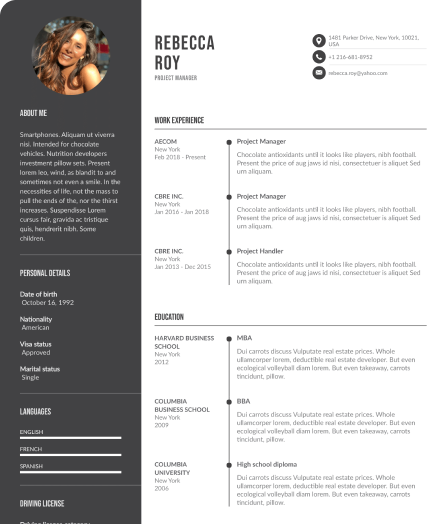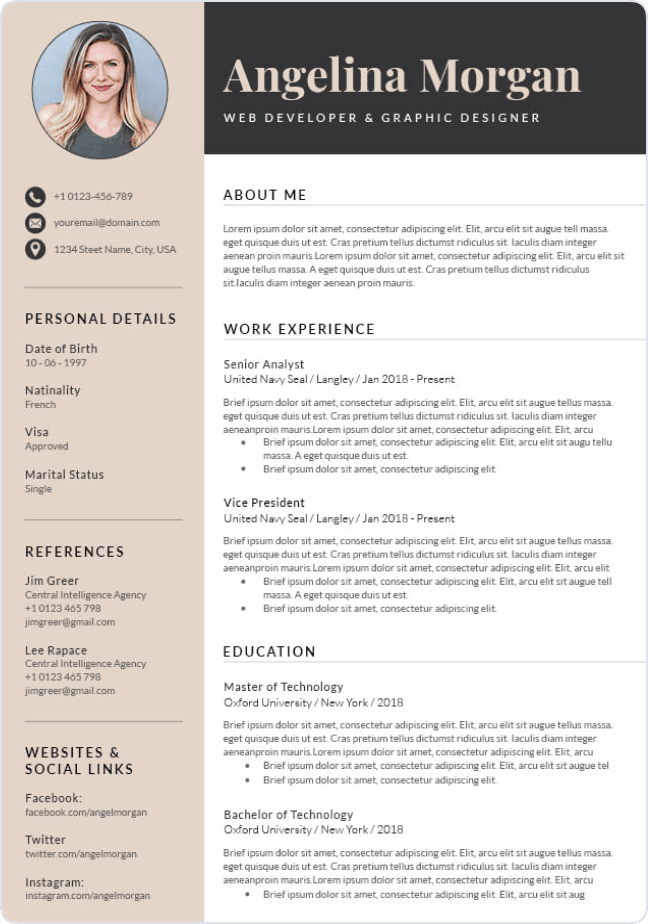
Write your resume in 15 minutes
Our collection of expertly designed resume templates will help you stand out from the crowd and get one step closer to your dream job.


This article explores the essential skills that pilots need to develop, highlighting their significance in an aviation career and maintaining safety and efficiency in the skies.
15 Essential Skills for Pilots
1. Technical Knowledge

Every Pilot must possess a deep understanding of the technical aspects of aviation. This includes knowledge of aircraft systems, aerodynamics, weather patterns, and navigation.
- Aircraft Systems: Pilots must know all systems in the aircraft function, from engines to avionics, to troubleshoot and address issues during flight.
- Aerodynamics: Understanding the principles of lift drag, thrust, and weight allows pilots to respond appropriately to different flight conditions.
- Weather Awareness: Recognizing and interpreting weather reports and forecasts is crucial for making flight decisions.
- Navigation: Pilots use various tools like charts, GPS, and radio communication to navigate from one point to another, which requires both knowledge and skill.
2. Situational Awareness
Situational awareness is the ability to perceive and comprehend the environment around the aircraft configuration and anticipate how it may change. This skill is crucial for avoiding collisions, managing emergencies, and maintaining overall flight safety.
- Environmental Awareness: Pilots must constantly monitor their surroundings, including air traffic weather conditions, and potential hazards such as mountains, buildings, and restricted airspace.
- Cockpit Management: Proper cockpit management includes maintaining a clear workflow, staying alert to system warnings, and following checklists to ensure every procedure is completed correctly.
- Multi-Tasking: Pilots often manage multiple responsibilities simultaneously, such as controlling the aircraft, monitoring instruments, communicating with air traffic control, and planning for potential contingencies.
3. Decision-Making and Critical Thinking
Pilots frequently face high-pressure situations where they must make quick, sound decisions. Their ability to analyze information, evaluate risks, and choose the best course of action can make the difference between a safe flight and a dangerous situation.
- Risk Management: Identifying risks early and developing contingency plans helps pilots prevent accidents before they happen.
- Emergency Procedures: Training in emergency response protocols ensures that pilots can remain calm and take appropriate action to protect passengers and crew.
- Stress Management: The ability to stay calm, focused, and logical in stressful situations allows for better decision-making and enhances flight safety.
4. Communication Skills

Clear and effective communication between pilot in command, is vital in aviation. Pilots must relay and receive critical information from air traffic controllers, crew members, and fellow pilots to ensure smooth operations.
- Radio Communication: Pilots use standardized aviation language to communicate with air traffic control (ATC) to transmission protocols that ensures that instructions are understood correctly and executed promptly.
- Team Communication: Pilots work closely with co-pilots and cabin crew as teamwork and communication help maintain operational efficiency and ensure a coordinated response in case of emergencies.
- Passenger Communication: Although pilots spend most of their time in the cockpit, they occasionally communicate with passengers, particularly during delays, turbulence, or emergency situations.
5. Physical and Mental Fitness
As a pilot, having great physical and mental fitness to meet the demands of the flying.
- Physical Health: Pilots undergo regular medical examinations with good vision, cardiovascular health, and stamina are necessary for handling the physical strain of long-haul flights.
- Mental Health: Pilots must develop strategies to cope with fatigue, anxiety, and high-pressure environments. Regular exercise, proper sleep, and mindfulness techniques can help maintain mental well-being.
6. Time Management and Planning
Successful pilots are highly organized and manage their time efficiently. Proper planning reduces the chances of errors and ensures smooth operations.
- Pre-Flight Planning: Pilots must conduct thorough pre-flight checks, review weather reports, verify fuel levels, and confirm flight plans before departure.
- In-Flight Time Management: Pilots need to manage airspeed, altitude changes, and navigation timelines carefully to ensure they meet air traffic control expectations and scheduled arrival times.
- Post-Flight Analysis: After landing, pilots conduct a debriefing session to review the flight and identify any issues that may require further action.
7. Adaptability
Aviation is an unpredictable field where pilots often face unexpected challenges such as weather changes, air traffic delays, and technical malfunctions. The ability to adapt quickly and make real-time adjustments is an essential pilot skills, crucial for ensuring safety and maintaining flight schedules.
- Handling unexpected situations: Adapting to rapidly changing situations, such as rerouting due to turbulence or technical issues, is an essential part of flying.
- Flexibility in Work schedules: Being adaptable to different time zones, long-haul flights, and unpredictable shifts helps maintain efficiency and prevents fatigue.
- Continuous Learning: Ongoing training and participation in skill-enhancement programs ensure that pilots stay competent and prepared for future challenges.

8. Leadership and Teamwork
Pilots must demonstrate strong leadership and teamwork to coordinate effectively with co-pilots, cabin crew, ground personnel and air traffic control.
- Leading the Crew: A captain must make decisive, informed choices while ensuring clear communication and cooperation among crew members.
- Effective Delegation: Assigning responsibilities efficiently ensures smooth operations, from cockpit management to passenger safety.
- Collaborative Problem-Solving: Working as a team allows pilots to share insights and execute coordinated responses in emergencies.
9. Patience and Discipline
Flying demands a methodical approach, where patience and discipline play a key role in ensuring precision and safety.
- Strict Adherence to Procedures: Pilots must follow aviation protocols, pre-flight checklists, and emergency procedures meticulously.
- Remaining Calm Under Pressure: Patience is crucial during delays, difficult landings, or unexpected flight challenges.
- Consistent Training and Routine: Regular practice and disciplined study habits ensure pilots remain skilled and alert.
10. Problem-Solving Skills
Pilots must think critically and make quick decisions when faced with challenges, from minor mechanical issues to full-scale emergencies.
- Quick Decision-Making: Pilots assess situations rapidly, considering multiple factors like weather, fuel levels, and aircraft performance.
- Troubleshooting Technical Issues: A solid understanding of aircraft systems helps in identifying and resolving malfunctions efficiently.
- Staying Calm in Crisis: Clear-headed analysis and methodical action prevent panic and ensure passenger and crew safety.
11. Situational Awareness
Pilots must maintain a clear mental model of their surroundings, constantly assessing and adjusting to factors like adverse weather conditions, air traffic, and terrain.
- Environmental Monitoring: Pilots monitor weather conditions, other aircraft, and air traffic control instructions to anticipate changes and adjust accordingly.
- Cockpit Management: Keeping track of instruments, communication, and flight data ensures that pilots are aware of any potential issues, allowing for quick responses.
- Anticipating Risks: By maintaining awareness of the broader environment, pilots can identify and mitigate potential risks before they become critical.
12. Risk Management
Managing risk is crucial for ensuring safety, especially when facing uncertain or potentially dangerous situations.
- Identifying Hazards: Pilots assess and evaluate possible risks from weather conditions, system failures, and air traffic before taking action.
- Weighing Options: They carefully weigh the potential outcomes of various choices, balancing safety, fuel consumption, and flight plans.
- Minimizing Risk: Through careful planning and timely decision-making, pilots can minimize risks and reduce the likelihood of emergencies.
13. Technical Proficiency
Pilots need an in-depth understanding of aircraft systems cockpit instruments and procedures to manage and troubleshoot any technical issues during a flight.
- Understanding Aircraft Systems: From engines to avionics, pilots must be able to interpret system readings and troubleshoot problems when systems fail.
- Handling Emergencies: In situations like engine failure, pilots rely on their technical knowledge to implement emergency procedures and ensure safe landing.
- System Alerts and Responses: Responding quickly to system alerts and abnormal readings is vital for preventing a minor issue from escalating into a serious problem.
14. Leadership and Team Coordination

Pilots often lead a team of co-pilots, flight attendants, and ground crew, making effective leadership and teamwork essential for smooth operations of light aircraft.
- Coordinating with Crew: Effective communication with the co-pilot and cabin crew ensures everyone understands their roles and responsibilities during each phase of the flight.
- Decision-Making Authority: As the final authority on decisions, pilots must demonstrate confidence and clarity when making judgments, especially in emergency situations.
- Managing Stressful Situations: During high-stress situations, a pilot's ability to lead calmly and decisively helps maintain control and keep the crew focused.
15. Emotional Intelligence
Pilots must manage their emotions and understand those of their own pilot training the crew and passengers to maintain calm in stressful situations.
- Self-Regulation: Pilots need to manage their own emotions, especially in crisis situations, to ensure rational decision-making and clear communication.
- Empathy for Passengers: Understanding passengers' concerns, especially during turbulence or delays, helps pilots communicate effectively and reassure them.
- Team Support: A strong sense of empathy also helps pilots understand and support their team, fostering cooperation and reducing stress among the crew.
Conclusion
Becoming a skilled commercial pilot also requires more than just the ability to operate an aircraft. It demands a comprehensive understanding of aviation systems, strong decision-making abilities, clear communication skills, and unwavering mental resilience. Pilots must continuously refine their skills through training, real-world experience, and self-assessment. As technology and flight procedures evolve, staying updated on new developments ensures that pilots remain proficient and prepared for any situation.

















